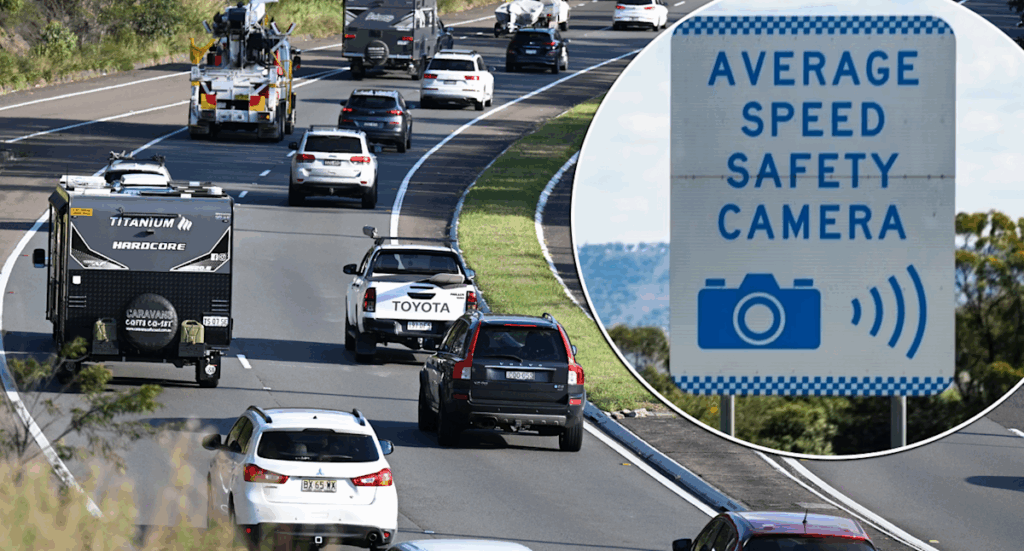
The introduction of new average speed cameras in New South Wales (NSW) marks a significant shift for regular motorists, as the grace period for these devices ends this week. Previously impacting mostly heavy vehicle drivers, the technology will now monitor all road users on two key stretches of road, issuing fines to those exceeding speed limits starting Tuesday.
For the past two months, these point-to-point systems have been active, but only warning letters were sent to drivers caught speeding, unless they were traveling more than 30 km/h over the limit. However, from July 1, this leniency comes to an end, and fines will be enforced.
How the New System Works
The average speed cameras function by recording a vehicle’s entry and exit times at two specific points. The system then calculates the average speed over the distance to determine if the driver has exceeded the speed limit.
The selected locations, chosen due to their crash history, include a 15 km stretch on the Pacific Highway between Kew and Lake Innes, and a 16 km segment on the Hume Highway between Coolac and Gundagai.
Official Statements and Public Reaction
Duncan Lucas, Executive Director of Road Safety Regulation at Transport for NSW, stated, “Motorists are reminded that from today the cameras will begin capturing light vehicle speeding offences. Warning letters will be issued to those caught for the first two months before penalties will begin on July 1.”
While road safety advocates have welcomed the comprehensive monitoring, there are concerns about potential drawbacks. Traffic lawyer Hayder Shkara expressed that the system might target “everyday drivers” who inadvertently exceed speed limits while overtaking or due to distractions.
“I also think the average speed cameras may encourage drivers to become overly fixated on maintaining speed rather than focusing on overall safety, like adjusting to conditions or anticipating hazards,” Shkara noted.
Impact on Road Safety and Driver Behavior
The move aims to reduce crashes caused by speeding, with a spokesperson for Transport for NSW emphasizing that “average speed safety cameras encourage drivers to stick to the speed limit over longer distances, not just when they see a camera.”
However, the debate continues on whether this will lead to safer roads or simply increase the financial burden on drivers. The cameras are expected to make drivers more conscious of their speed, potentially reducing accidents but also possibly leading to increased stress and distraction.
By the Numbers: NSW Speeding Fines
- Exceed speed limit by 10 km/h or less: Unrestricted licence: $145 fine, 1 demerit point; Learner or P1/P2 licence: $145 fine, 4 demerit points
- Exceed speed limit by over 10 km/h but not more than 20 km/h: Unrestricted licence: $334 fine, 3 demerit points; Learner or P1/P2 licence: $334 fine, 4 demerit points
- Exceed speed limit by over 20 km/h but not more than 30 km/h: All drivers: $574 fine, 4 demerit points
- Exceed speed limit by over 30 km/h but not more than 45 km/h: All drivers: $1,097 fine, 5 demerit points
- Exceed speed limit by over 45 km/h: All drivers: $2,959 fine, 6 demerit points
Looking Ahead
The implementation of these cameras represents a broader effort to enhance road safety across NSW. As drivers adjust to the new system, authorities will monitor its impact on reducing speeding-related incidents. The debate over the effectiveness and fairness of average speed cameras is likely to continue, with further analysis needed to assess their long-term benefits and potential drawbacks.
For now, motorists are advised to remain vigilant and adhere to speed limits to avoid penalties. As the situation evolves, updates will be provided on any further developments or changes to the enforcement strategy.






